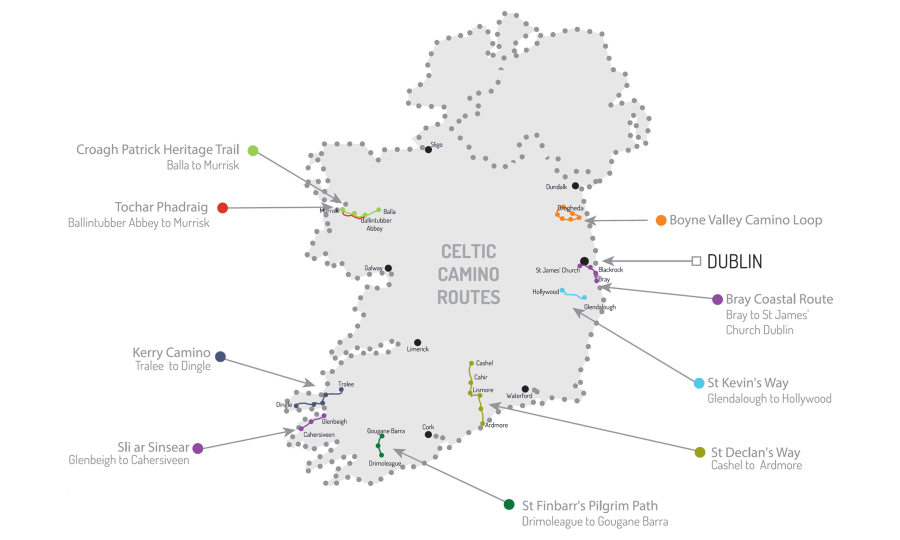Celtic Camino: from Ireland to Santiago
The Camino Inglés to Santiago de Compostela is linked to a number of pilgrimage trails enabling modern pilgrims to start the journey before leaving their country.
Literary texts show us long-established links between the Irish and A Coruña, including the Leabhar Gabhála (Book of Invasions) which recounts how the sons of Mil, from whom the Gaels descended, had seen Ireland from Breogán’s Tower, the famous Roman lighthouse in A Coruña. Trade, history, sermons and ancient tales have woven a link between the two places and provided those thinking of a pilgrimage from Ireland to Santiago with a sense of travelling through a familiar landscape.
From the 1200s, pilgrimage to Santiago became popular among the Irish. Pilgrims departed by boat, choosing short sea crossings to ports in the South of England and then on to France, followed by long overland routes. In the 15th century, a boom in pilgrimages from Ireland occurred when larger, faster and safer merchant ships were able to undertake the sea crossing directly to the Iberian coast, mainly to the port city of A Coruña.
Although there are records of crowded ships leaving Irish ports such as New Ross in Wexford with 400 hundred pilgrims, it is only possible to trace the lives of some of the elite Irish pilgrims, such as Mayor James Rice from Waterford, whose belief in the effectiveness of pilgrimage made him visit Santiago twice. Within Ireland, there were also pilgrim paths leading to the ports of departure in Galway, Limerick, Cork, Waterford, Dublin or Drogheda to name a few.
Today, the Camino Celta or Celtic Camino brings together this tradition of Irish pilgrimage with wonderful itineraries in Ireland and the Camino Inglés from A Coruña to Santiago. The 25 km travelled in Ireland and the 75 km from A Coruña have been named Celtic Camino by the Camino Society Ireland. It’s an unforgettable experience that starts in Ireland, crosses the sea and ends in Santiago where pilgrims obtain the Compostela for having walked the minimum required 100 km across the two countries.
Camino Society Ireland has also undertaken the task of defining and recognising the authentic pilgrimage routes within Ireland itself. Pilgrims must prove the completion of 25 km of the route in Ireland with the relevant stamps on the official Camino de Santiago Passport and the Camino Society will verify it by giving the pilgrim a Celtic Camino Compostela. This will be shown to the Pilgrim's Office in Santiago de Compostela together with the stamps from A Coruña to Santiago on the Pilgrims’ Passport for the remaining 75 km to obtain the Compostela granted by the Cathedral in Santiago.

